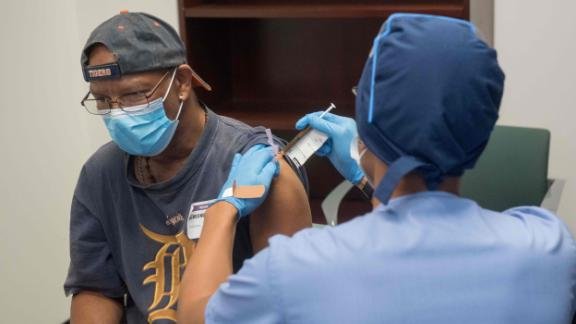Why Trump should worry about a rushed vaccine

This week, President Donald Trump again stated his hope that the United States would have a Covid-19 vaccine by year’s end. He even suggested that maybe, just maybe, vaccinations might start by late October.
Stranger things have happened. Russia already has approved and distributed its vaccine, called Sputnik V. China approved the CanSino vaccine for its military in late July. So far there have been no reports from either country of unexpected side effects or of efficacy.
But developments in the United States are showing the dangers of runaway optimism. On Monday, AstraZeneca announced that it had suspended clinical trials of its product, also referred to as the Oxford vaccine, while it investigates a possible adverse event in a vaccine recipient.
In addition, nine vaccine makers just formally pledged to emphasize safety, not speed, in their product development.
The reason for all this caution is not political. It’s not because scientists are a bunch of feeble worrywarts. Rather, it is because the history of vaccines is full of alarming missteps.
For example, in 1930, the wrong strain of the new tuberculosis vaccine (Bacille Calmette-Guerin or BCG) was accidentally given to children in Lubeck, Germany, killing many. Then, 25 years later, an unapproved polio vaccine was inadvertently administered to thousands of children in the Midwest, resulting in death and paralysis.
More recently, the ill-fated Swine flu vaccine was urgently developed and administered in a presidential election year. A small uptick in cases of Guillain-Barre disease, a known neurological complication of vaccination, was seen during the vaccine rollout. Even today, the causal link remains uncertain. Some feel that this was one of the reasons that led to President Gerald Ford’s 1976 loss to Jimmy Carter.
These events surely are troubling, but the current rush to vaccination is most reminiscent of yet another vaccine misstep: LYMErix, a vaccine against Lyme disease that was FDA-approved in 1998 but pulled from the market a few years later. The Trump Warp Speed team would be well served to read the article entitled, “The Lyme vaccine: a cautionary tale.”
Then as now, Lyme disease was an infection of tremendous public concern. The results of a well-performed randomized placebo-controlled trial of almost 11,000 people published in The New England Journal of Medicine showed that Lyme cases were reduced 78% by the new vaccine and — best of all — no safety concerns were seen.
But then reality happened. The first wave of regular people — not in curated clinical trials — got the three-injection vaccination. Many had aches and fever after the first or second shot. That was routine for most vaccinations, the vaccine experts said. Then came more vaccinations and more complaints. Still routine, the experts said.
Word about the aches and pains though got around and the public suddenly was in no hurry to try a new vaccine, even for a dreaded disease. Supplies sat unused in doctors’ offices.
The final nail in the coffin of the brief market life of LYMErix was a series of lawsuits, and the vaccine was withdrawn in 2002 due to poor sales.
The claim was that some people who were given the vaccine developed painful arthritis — a known feature of Lyme disease itself. Though vaccinologists and public health experts have determined that the vaccine did not cause the arthritis, the entire “fiasco” has made other companies hesitant to work on Lyme vaccine development.
In 2003, several class actions suits were settled with the vaccine maker, SmithKline Beecham, which paid a little more than a million dollars to cover trial costs and fees. It denied that the vaccine caused any illness and said it was proved safe and effective in clinical trials. Patients who claimed injury did not receive any compensation.
In other words, a safe and effective vaccine was withdrawn because of a flurry of side effects and bad press soon after introduction, long before the effectiveness of the vaccine and the possible benefits of a Lyme-freer life could be experienced. LYMErix has demonstrated the unalterable fact that, for vaccines, side effects — not benefit — always appear months and even years before clear demonstration of population-level benefit.
If rushed, the likeliest result of October vaccinations of whatever product is used will be November fevers and sore arms and headaches — and perhaps even lawsuits and actual harm. Any politically motivated grab for a quick fix once again will be stymied by reality.
But worse than the risk of serious side effects is the impact of yet another failed “here comes the miracle!” strategy. We have watched a series of previous “miracles” and “game-changers” fall flat: the original Abbott testing platform and hydroxychloroquine and a change in seasonal weather and the MyPillow guy’s supposed new immune supplement. The “miracles” come and go; only the historic pandemic remains.
Placing hope in the predictably useless not only is demoralizing, it also weakens current acceptance of the monotonous and difficult — but extremely effective — public health measures of hand washing, distancing, wearing masks and avoiding indoor crowds.
But this is the only path forward even as we step away to let the scientists do their work at the pace the experiments demand. As my colleague Dr. Peter Bach and I once wrote about the scientific pace needed for Covid-19 treatments, urgency demands patience.
